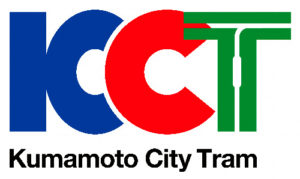
The Kumamoto Tramway was opened in 1924 and gradually expanded during the 1930s. In 1944, during the war, all the city-owned transportation agencies were meged and restructured into the new “Kumamoto City Transportation Bureau”, wich still operates the tram to this day.
The Kumamoto tram peaked in the mid-1950s, but by then, busses and private automobiles started to replace the trams, with the system entering a phase of decline, wich was reversed only in the mid-1980s, when the city transportation bureau undertook a process of modernization of the tram system, wich among other things, led to the introduction of Japan’s first VVVF-controlled railway vehicles, the 8200 Series, and Japan’s first fully-low-floor trams: the 9700 Series, built by Niigata Transys under license from the german ADtranz.
Today, the Kumamoto City Tram network is 12Km long, it uses 1435mm standard gauge with a 600V DC catenary, and it’s services are split into two routes: A and B, wich run in a “Y” shape.
The Kumamoto City Transportation Bureau also used to operate busses, but starting from 2009, the bus services were gradually transferred to the semi-private Kumamoto City Bus company, with the last line being handed over in 2015.
Trivia:
The Kumamoto City Tram officially has five “lines” (as in “sections of tracks”), a renmant of the times when the tramway network was much larger. Today, these five lines (and their names) are only used on official documents, and the services are run as the two “Routes” instead.
Articulated Trams
